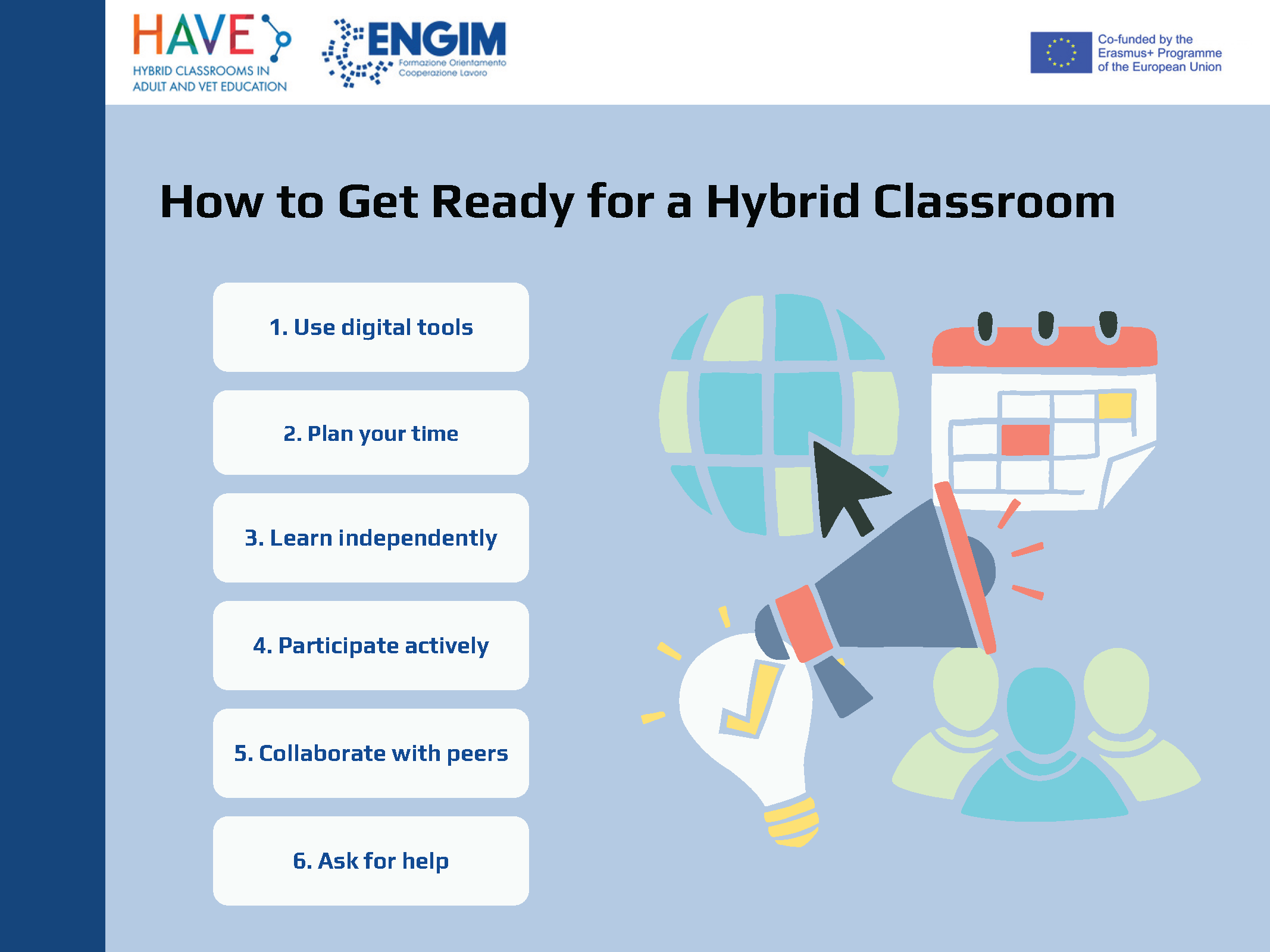Student guidelines ENGIM
Skills and competences, Evidence of learning, Feedback, Action pansUsing Digital Tools
Students should become proficient in using various digital tools required for hybrid learning. This includes familiarizing themselves with video conferencing software, online collaboration platforms, and digital resources to ensure smooth participation in both online and in-person classes.
Planning Your Time
Effective time management is crucial in a hybrid classroom. Students need to plan their schedules to balance online and in-person activities, ensuring they allocate sufficient time for studying, attending classes, and completing assignments.
Learning Independently
Hybrid learning often requires a higher degree of self-directed learning. Students should develop the ability to learn independently, utilizing online resources and materials to supplement their understanding and stay on track with the course content.
Participating Actively
Active participation is key to success in a hybrid classroom. Students should engage in discussions, ask questions, and contribute to group activities, whether they are attending classes online or in person. This helps in building a sense of community and enhances the learning experience.
Collaborating with Peers
Collaboration with peers is an important aspect of hybrid learning. Students should work together on projects and assignments, leveraging digital tools to communicate and share ideas effectively, regardless of their physical location.
Asking for Help
Students should not hesitate to ask for help when needed. Whether it’s seeking clarification from instructors or getting support from classmates, reaching out for assistance is vital to overcoming challenges and ensuring a successful learning experience.


